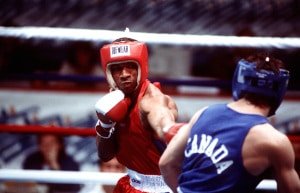5 Tips To Help You Turn Your Super Bowl Ad Into An Online Hit
Remember Chrysler’s Super Bowl ad from last year? If so, you are one of the few, with only 7% of Super Bowl Sunday viewers realizing the ad was for the autos brand, while 12% thought it was for the city of Detroit. Incredibly, 4% thought it was for rival Ford.
Making sure your Super Bowl spot is heavily branded is one of the key recommendations included in a report we have compiled looking at how Super Bowl brands can make the most of their Super Sunday spots online. It looks into why online shares of Super Bowl ads decreased for the first time by almost a third (29.2%) – despite overall sharing of branded videos increasing by 22% last year – and offers key tips on how to make the most of your digital strategy.
Although, brands spend $4.5M on 30 seconds of airtime during the game, over the last few years increasingly the battle between the brands has been online, way before Super Bowl Sunday. Last year 93.3% of Super Bowl ads were launched on the web before game day.
However, Unruly’s research found that a lot of the Super Bowl sponsors fumbled the ball because of poor quality content and distribution.
Budweiser emerged as the clear winner of the Super Bowl in 2014, with its video (Puppy Love – 2014) taking home the most shared Big Game spot for the second year in a row (Brotherhood was top in 2013). Despite this, the shares of Budweiser’s top-performing video were 24.1% down in 2014 compared to 2013.
With almost 2 million shares, Budweiser’s “Puppy Love” was the runaway winner of Super Bowl 2014. However, with a few distribution tweaks, it could have been Microsoft’s “Empowering” (which finished 16th overall in Big Game sharing).
“Brands missed a huge opportunity at last year’s Super Bowl. With the majority of ads launching prior to game day, brands need to capture viewer’s attention to make them want to share, and the re-share again after the Big Game,” said Sarah Wood, Unruly co-founder and COO. “Hopefully brands learn from their missteps of last year and marry quality content with a sound distribution strategy.”
To help, we have put together a list of 5 tips to help marketers launch a successful Super Bowl video:
1. Pack an emotional punch

Advertisers in 2014 failed to create content that generated intense psychological responses from its audience – on of the biggest factors that influence online sharing success. When Unruly studied the biggest Supre Bowl ads, they found a glut of middling levels of common triggers like hilarity – a very tricky emotion to get right. Whichever emotions a brand seeks to trigger, do so with intensity. Mid-intensity responses do not drive sharing or deliver earned media (go for a belly laugh versus mere amusement). Microsoft’s “Empowering” and Budweiser’s ”Puppy Love” were the most intrinsically shareable ads in the study, which elicited a diverse mix of intense responses.
2. Layer on the social motivations
People share videos for a variety of reasons. These include showing your friends and family that you are in-the-know, championing a cause or shared passion or simply trying to start a conversation. To get your ad shared you need to provide viewers with multiple reasons to share. That way, if one fails to resonate with an audience, there are fall back options. In 2014, we saw many ads only elicited one significant social motivation from viewers, and generally at lower levels of intensity. The most intrinsically shareable ads evoked multiple social motivations. They layered on the social motivations, creating a back-up plan if the first one failed while also appealing to a wide range of viewers. Microsoft’s “Empowering” gave multiple reasons to share, including social good, zeitgeist, opinion seeking and self expression.
3. Get your timing right

Unruly’s research found that Microsoft’s “Empowering” and Budweiser’s “Puppy Love” both elicited strong psychological responses, while giving viewers strong social motivations to share online. The difference was the launch timings. Budweiser launched its ad online the Wednesday (the optimal day to release content) before Super Bowl Sunday, and was able to achieve two viral peaks (one after launch and one on the second day after the game aired). Microsoft waited until the day itself to launch and missed the opportunity for dual peaks.
4. Plan for “In Real Life” (IRL) surprises
Unless you were watching from somewhere around Seattle, last year’s game was a real snooze. Many viewers likely stopped paying intense attention to the TV screen as the game progressed, and the advertisers who launched content in the latter half of the broadcast likely had less viewer attention. Unfortunately, many of these advertisers made the decision not to launch in advance of the Big Game and they launched to a diminished viewer awareness.
5. Promote Your Brand
Unruly found that brand recall in last year’s Super Bowl ranged from 95% to 7%, yet research has shown that there is no independent correlation between brand presence and sharing behavior. In fact, some of the most highly-shared ads of all time (e.g. VW’s 2011 Super Bowl hit “The Force” is heavily branded.) Last year, Chrysler created a beautiful spot, with high production values featuring the legendary Bob Dylan which evoked feelings of pride and nostalgia. However, only 7% of viewers realized the ad was for Chrysler, while 12% thought it was for the city of Detroit, and 4% thought it was for rival Ford. The danger of too lightly branding an ad is that viewers will think it came from a competitor – who did not outlay any sponsorship funds.
